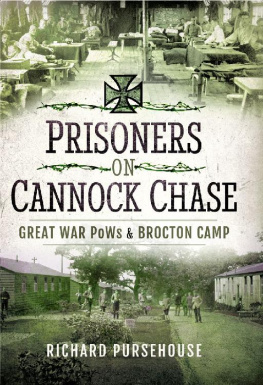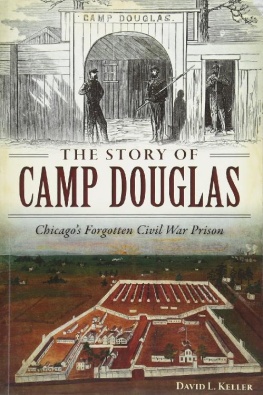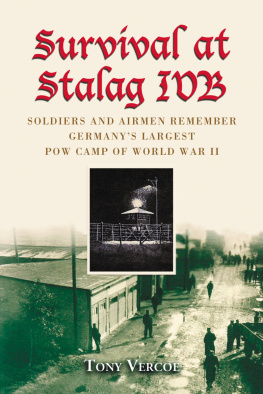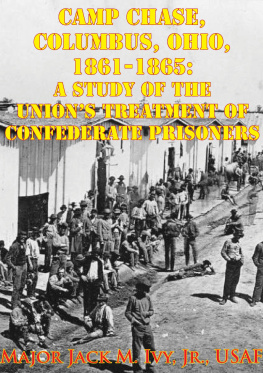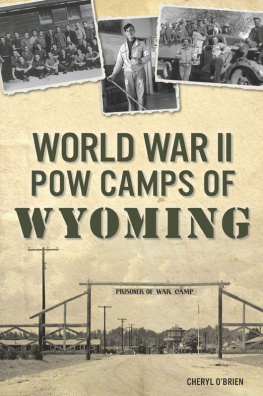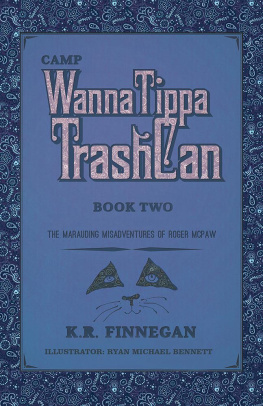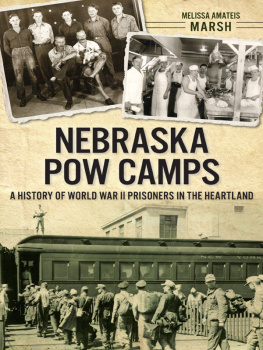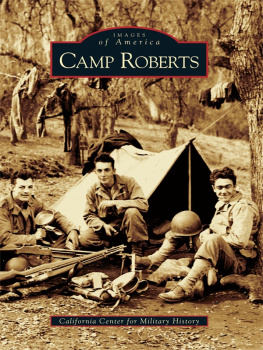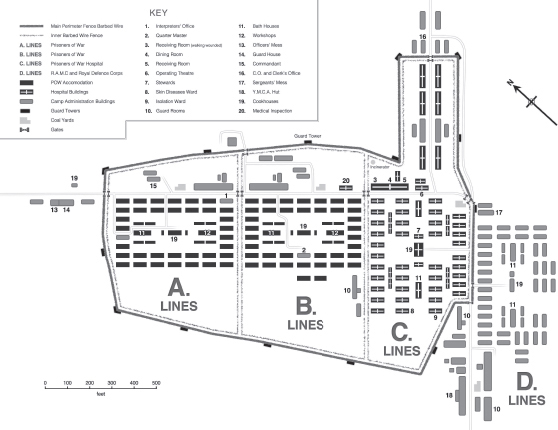PRISONERS ON
CANNOCK CHASE
PRISONERS ON
CANNOCK CHASE
GREAT WAR PoWs & BROCTON CAMP
RICHARD PURSEHOUSE
PRISONERS ON CANNOCK CHASE
Great War PoWs & Brocton Camp
First published in Great Britain in 2020 by
Frontline Books
An imprint of
Pen & Sword Books Ltd
Yorkshire - Philadelphia
Copyright Richard Pursehouse, 2020
ISBN 978 1 52672 825 8
eISBN 978 1 52672 826 5
Mobi ISBN 978 1 52672 827 2
The right of Richard Pursehouse to be identified as the author of this work has been asserted by him in accordance with the Copyright, Designs and Patents Act 1988.
A CIP catalogue record for this book is available from the British Library
All rights reserved. No part of this book may be reproduced or transmitted in any form or by any means, electronic or mechanical including photocopying, recording or by any information storage and retrieval system, without permission from the Publisher in writing.
Pen & Sword Books Ltd incorporates the Imprints of Aviation, Atlas, Family History, Fiction, Maritime, Military, Discovery, Politics, History, Archaeology, Select, Wharncliffe Local History, Wharncliffe True Crime, Military Classics, Wharncliffe Transport, Leo Cooper, The Praetorian Press, Remember When, Seaforth Publishing and Frontline Publishing.
For a complete list of Pen & Sword titles please contact
PEN & SWORD BOOKS LTD
47 Church Street, Barnsley, South Yorkshire, S70 2AS, England
E-mail:
Website: www.pen-and-sword.co.uk
Or
PEN AND SWORD BOOKS
1950 Lawrence Rd, Havertown, PA 19083, USA
E-mail:
Website: www.penandswordbooks.com
Contents
Introduction
For many years I have walked across Cannock Chase in Staffordshire, come rain, snow, sun, fog and frost, occasionally coming across heavy rusted covers mostly circular, sometimes rectangular that I assumed were manholes or storm drain covers. These seemed rather incongruous on the pathways between the trees, bracken and heather, given there were no buildings anywhere nearby. My parents mentioned that there was an RAF Hednesford a couple of miles away (my father was stationed there after the Second World War) but we all concurred surely there could be no connection?
Gradually, under a generic the camps umbrella, snippets of information came to light from newspapers and various people my parents knew who had an interest in local history. The camps or more accurately the Great War camps at Brocton and Rugeley constituted Cannock Chase Reserve Centre and were set up to house and train tens of thousands of recruits both volunteers and conscripts during the four years that they were established across the Chase. At Rugeley Camp, the land is flatter and the layout of the hutments was in a grid system; the rolling landscape of Brocton Camp necessitated a more chaotic layout of the hutments. Some had been terraced and cut into the landscape, while others had been constructed on raised brick stacks, some of which still exist, or on wooden supports long since rotted away. I concluded the metal covers scattered across the area were the visible remnants of the sewer systems across the two camps.
As the interest in the camps grew, three distinct areas of focus developed; firstly, the training (for example the numerous rifle ranges and the first scout/sniping school in Britain); secondly, the two distinct camps that formed Cannock Chase Reserve Centre itself; and thirdly, the arrival of some of the best fighting men in the British Army from the uttermost ends of the earth the New Zealand Rifle Brigade to continue their training for the fighting on the Western Front.
of the Belgian town of Messines by the New Zealand troops during the Great War.
The terrain model of Messines features briefly in a general book titled A Town For Four Winters, written over thirty years ago, about the two Great War training camps of Brocton and Rugeley that sprang up over Cannock Chase from 1915. The book included two photographs of the terrain model. Thus began the odyssey in 2006 that would culminate in the archaeological excavation of the remains of the model seven years later. That, however, is another story.
Dolores Ho, the Archivist at the National Army Museum in New Zealand, was contacted about the Messines model because the book A Town For Four Winters claimed it was probably constructed by German prisoners under the direction of the New Zealanders. Within a few days she had tracked down a different photograph of the model nearing completion, and attention focussed on the new trenches, roads and buildings etc in this previously unseen photograph.
One day a Damascene moment occurred, as the focus switched to two men in the bottom left corner of this new photograph, for months a useful gauge to the size and scale of the model area, and the tangentialising began. The two men, shirtsleeves rolled up, appeared to be doing some general labour on the perimeter of the model; one was bending over and there was a dark circle on the back of his shirt, initially dismissed as a sweat stain; the other wore an unfamiliar cap, and checking photographs of the New Zealand soldiers proved it was definitely not one of their lemon-squeezer-shaped cloth caps.
The two men were German prisoners; the dark circle on the back of the one soldier was not sweat, but a cloth patch sewn on to identify that he was a prisoner; the headwear of the other soldier was a German pillbox-shaped feldmutze cloth cap. The brief comment in A Town for Four Winters that there was a German prisoner of war camp at Brocton and that prisoners had probably helped in the construction of the Messines model became a focus of yet more new research. What was initially an intriguing, relatively minor distraction has morphed into this book on the prisoner of war camp Project 2 in a series of four projects being simultaneously juggled, created in no particular order, the information having been collated concurrently with the research on the Messines model (Project 1), the camps that formed Cannock Chase Reserve Centre (Project 3), and the New Zealand Rifle Brigades time on Cannock Chase (Project 4).
This book is the culmination of many, many hours of research, identifying points in the landscape then and now and almost as many hours of traipsing across Cannock Chase in all weathers with my wife Chrissie, spurred on by the naming of Parkers tree after my dog; I took a photograph of Parker with an old oak in the distance which I realised was in the Brocton Lagerstrasse photograph (see book cover) that I had purchased for 10 in 2006, thereby pinpointing the location of the main route through the prisoner of war camp and therefore its exact location on Cannock Chase.
Hopefully the reader will find this peregrination from manhole cover to book cover as fascinating as I have found piecing the story together.
Maps

